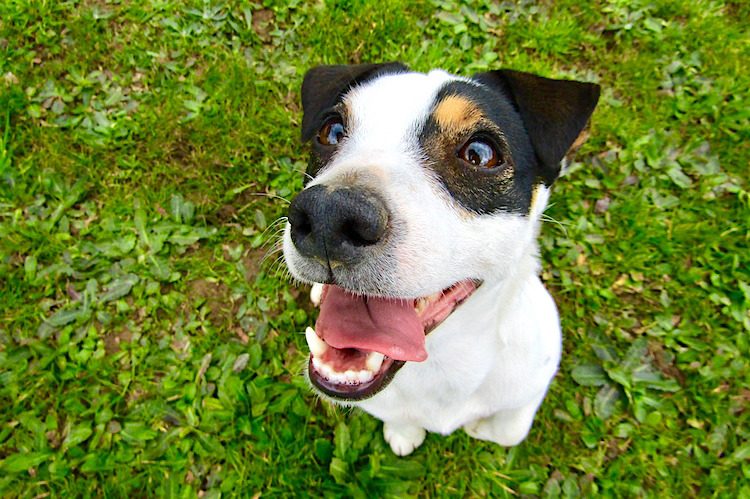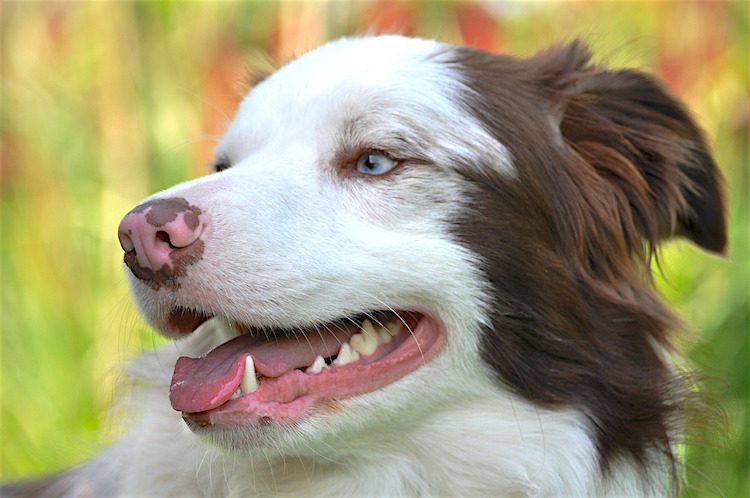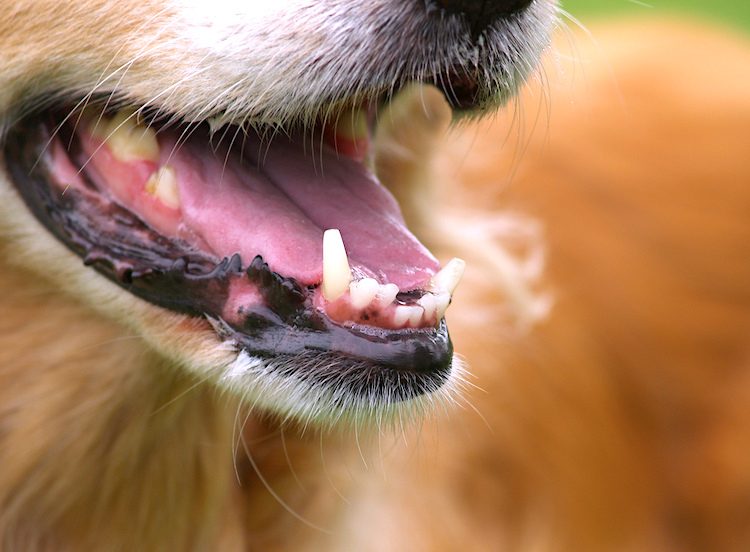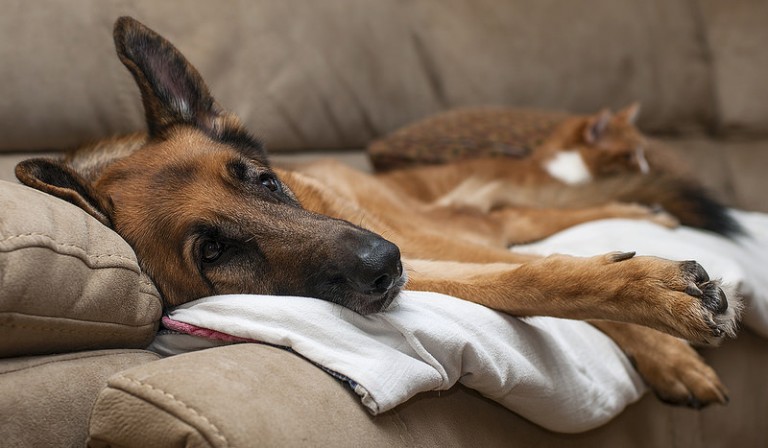What It Means When a Dog’s Gums Are Pale
Pale gums in dogs can be a sign of a health problem, so it’s important to know the difference between healthy and unhealthy gums.
This pet health content was written by a veterinarian, Dr. Pippa Elliott, BVMS, MRCVS. It was last reviewed on November 11, 2024
If you have questions or concerns, call your vet, who is best equipped to ensure the health and well-being of your pet. This article is for informational purposes only and is not a substitute for professional medical advice, diagnosis, or treatment. See additional information.


Don’t leave your pet’s safety to chance
Sign up for Petful recall alerts today.

What Can Pale Gums in Dogs Indicate?
Pale gums in dogs can reveal several health concerns, acting like a warning light for potential issues. Key health conditions associated with pale gums include:
- Anemia – A lack of red blood cells, which affects oxygen levels.
- Heart Failure – Reduced blood flow may result in pale gums.
- Breathing Difficulties – Limited oxygen can cause a change in gum color.
- Dehydration – Dry, pale gums are often linked to fluid loss.
Knowing what healthy gums look like is essential to spotting these issues early. Here’s how healthy dog gums typically appear:
- Color – Pale pink with a slight shine.
- Texture – Moist, indicating good hydration.
If you’re ever uncertain about your dog’s health, consult your veterinarian right away for professional guidance.

Healthy Dog Gums: What to Look For
A dog’s gums can reveal a lot about their overall health. Since the gums are a mucous membrane, they offer a clear “window” into potential health issues, making it easier to gauge if something is wrong.
To examine the gums:
- Lift the Lip Gently – Simply lift your dog’s lip to get a view of their gums.
- Look for Color and Texture – Healthy gums are pale pink and slightly shiny, indicating hydration and good blood flow.
Tip: If your dog isn’t comfortable being handled, check the color of the inner eyelid instead. This area is also lined with mucous membrane and follows the same color-change rules.
For guidance on handling dogs safely and reducing the risk of bites, see how to understand canine temperament.
What Do Healthy Dog Gums Look Like?
Healthy dog gums closely resemble a healthy person’s gums. Here’s what to look for:
- Color – Pale pink, similar to the color of human gums.
- Shine – A slight shine on the gums, indicating adequate hydration.
To compare, try this at home:
- Look at the color of your own lower gums or inner eyelid.
- This pale pink hue is the ideal color for your dog’s gums as well.
When your dog’s gums have this healthy appearance, it usually means their circulation and hydration levels are good.
Are Dark Patches on My Dog’s Gums a Concern?
Dark patches on your dog’s gums aren’t always a cause for alarm. While pale pink gums are generally a sign of good health, some dogs naturally have pigmented gums or spots due to their breed or coat color. Here’s what to watch for:
- Normal Pigmentation – Gray-blue or brown patches are often harmless and reflect natural coloring.
- Signs of Concern – Coal-black patches could indicate excessive melanin, which may signal malignant melanoma, a serious type of cancer.
If you notice coal-black spots, have your dog checked by a vet. Learn more about malignant melanoma in pets.

Why Are My Dog’s Gums Shiny and Pink?
A dog’s gum color and texture offer valuable insights into their health:
- Shiny Gums – This shine indicates good hydration. Well-hydrated gums will appear slightly moist and glistening.
- Pink Color – Pink gums suggest healthy blood flow. The small blood vessels close to the gum surface allow oxygenated blood to show through, creating the pink hue.
Dog Gum Color Chart
Different gum colors can indicate specific health issues. Use this chart to understand what different colors may mean:
- Yellow Gums – Often linked to liver disease or jaundice.
- Bright Red Gums – May signal infection, inflammation, or high body temperature.
- Pale Gray or White Gums – Can indicate anemia, blood loss, or shock.
Observing your dog’s gum color regularly helps catch health issues early.
| Color | Possible Cause | Signs |
|---|---|---|
| Pale gray or white |
|
|
| Yellow |
|
|
| Blue or purple |
|
|
| Pale blue or gray |
|
|
| Brick red |
|
|
| Black pigment (black spots) |
|
|
| Red line around the teeth |
|
As you can see, knowing what’s normal helps you appreciate the difference between healthy dog gums and a potential problem. Get into the habit of checking your dog’s mouth.
What Pale Gums in Dogs Tell You About Their Health
If your dog’s gums are pale, it’s often a sign of an underlying health issue. Here are the five primary concerns that come to mind:
- Anemia – A reduction in red blood cells that impacts oxygen levels.
- Blood Loss – This could be internal or external, leading to reduced blood volume.
- Shock – Often a result of trauma or severe medical issues, affecting circulation.
- Pain – Severe pain can reduce blood flow, leading to pale gums.
- Anxiety – High-stress levels may also impact blood circulation in the gums.
Each of these issues can have different causes and require specific care. Let’s take a closer look at each to understand how it may affect your dog’s health.
Causes of Pale Gums in Dogs: Anemia
Anemia is one of the most common causes of pale gums in dogs. While it often overlaps with blood loss, anemia can also occur without any active bleeding. In cases like these, a dog may become anemic if their bone marrow isn’t producing enough red blood cells. Here’s a breakdown of anemia causes:
- Autoimmune Hemolytic Anemias – The body attacks its own red blood cells, often leading to severe anemia. Learn more about autoimmune hemolytic anemia in dogs.
- Adverse Transfusion Reactions – Transfused blood cells may be destroyed if they’re incompatible.
- Parasites – Internal parasites like Babesia can damage red blood cells.
- Bone Marrow Damage – Illnesses, old age, or medications can interfere with blood cell production.
- Nutritional Deficiency – Although rare in dogs, a lack of iron can impact blood production.
Symptoms of Anemia in Dogs
Anemia may develop slowly, making the symptoms subtle. Watch for signs like:
- Weakness and low energy
- Shortness of breath
- Reduced appetite
- Possible increased thirst
Can a Dog Die From Anemia?
Yes, if left untreated, anemia can become life-threatening. This is especially true for autoimmune conditions that lead to severe blood cell destruction. In such cases, timely veterinary intervention is crucial. For severe cases, treatments such as blood transfusions may be necessary.

Blood Loss and Shock in Dogs
Blood loss is a common cause of pale gums in dogs, and it can result from various underlying conditions. Here are some primary causes:
- Internal Tumors – Bleeding from undetected tumors can reduce blood volume.
- Gut Wall Damage – Conditions like ulcers or hookworms can lead to bleeding in the digestive tract.
- External Parasites – Parasites like fleas, lice, and ticks may cause blood loss.
- Trauma – Injuries from accidents, fights, or lacerations can lead to significant blood loss.
- Blood Clotting Disorders – Issues caused by lungworm or ingesting rodenticides can disrupt normal blood clotting.
Shock in Dogs
When a dog experiences trauma, like being hit by a car, they may go into shock. Shock causes a severe drop in blood pressure, endangering vital organs like the brain and kidneys. Conditions like gastric dilation-volvulus (GDV) can also trigger shock.
In response, the body restricts blood flow to the skin and mucous membranes, leading to pale gums—a visible sign of the body’s struggle to maintain circulation.
Pain, Anxiety, and Pale Gums in Dogs
Pain and anxiety can also cause pale gums in dogs. When a dog is in pain or experiencing stress, blood flow to the skin may reduce as the body prepares for a “fight or flight” response. This reaction can make the gums appear pale, reflecting the body’s attempt to cope with stress.

How to Triage a Dog With Pale Gums
If you’re unsure whether to worry about your dog’s pale gums, you can perform a quick assessment at home. This triage method mirrors what a vet technician might do in a busy clinic:
- Lift the Lip or Check the Inner Eyelid – Carefully lift your dog’s lip or gently pull down their lower eyelid.
- Observe the Color – Look at the color of the gums or inner eyelid membrane. A healthy pink color is normal, while pale or other colors may indicate a problem.
If you see anything other than pink, it’s best to consult your veterinarian promptly, as this could signal an underlying issue requiring attention.
Capillary Refill Time (CRT) and Gum Health in Dogs
Capillary refill time (CRT) is a quick test to assess your dog’s circulation. To perform this test:
- Press the Gum – Gently press a spot on your dog’s gum with your finger, then release.
- Observe the Color Return – Note how quickly the color returns to normal. A healthy CRT should take less than 2 seconds.
If it takes longer than 2 seconds, your dog may have a circulation problem and should be checked by a vet.
Dry or Tacky Gums: A Sign of Hydration
The texture of your dog’s gums can indicate hydration status. Check how the gums feel:
- Moist – Ideal, indicating good hydration.
- Tacky or Dry – This can signal dehydration, especially if combined with other symptoms like vomiting or loss of appetite. Learn more about preventing dehydration in dogs.
If your dog is at home and relaxed, dry gums are less likely due to anxiety. Instead, look for other health signs that could contribute to dehydration.
Consider the Bigger Picture: Other Health Clues
When assessing your dog’s gum health, consider these additional factors:
- Recent Illness or Trauma – Has your dog been sick or injured recently?
- Circulation Concerns – Is your dog showing symptoms like coughing or other respiratory issues?
- Hydration Status – Have they been drinking enough, or have they experienced fluid loss due to diarrhea?
Reflecting on your dog’s recent health history can provide essential clues to what might be causing pale gums.
Here’s a quick tutorial from Dr. Melanie Hunt, DVM, on how to check your dog’s gums:
First Aid for a Dog With Pale Gums
If you notice that your dog has pale gums, immediate action may be necessary. Here’s what you can do:
- Contact the Vet – Call your vet right away and inform them of the situation.
- Stop Any Bleeding – If there is visible bleeding, apply pressure to stop it.
- Keep the Dog Warm – Ensuring warmth helps maintain circulation.
- Avoid Giving Pain Relief – Do not administer any pain medications at home, as certain medications, like ibuprofen, can be harmful to dogs.
Non-Emergency Steps: If the situation isn’t critical, consider checking your dog’s feces for blood and collecting a urine sample. A urine sample can help the vet determine if there is blood cell damage. Learn more about what urine tests reveal.
Following these steps can help provide essential information for your vet and potentially improve your dog’s outcome.
Final Thoughts on Pale Gums in Dogs
Regularly checking your dog’s gums can help you spot potential health issues early. Here are some key points to remember:
- Routine Checks – Regular gum checks increase your chances of catching health issues before they escalate.
- Home Environment – If your dog is calm at home, pale gums are less likely due to fear or anxiety, indicating a true health concern.
- Stay Calm, Act Promptly – Don’t panic, but do consult your veterinarian if you notice pale gums.
Frequently Asked Questions (FAQ)
What do pale gums look like in dogs?
Pale gums in dogs appear lighter than usual, often with a whitish or grayish tint instead of a healthy pink.
What does pale gums mean in dogs?
Pale gums in dogs can indicate health issues such as anemia, blood loss, shock, or dehydration and should prompt a veterinary check.
References
- Ward, Ernest, DVM. “Anemia in Dogs.” VCA Hospitals. 2015. https://vcahospitals.com/know-your-pet/anemia-in-dogs.
- Shaw, Nicole, DVM, DACVIM, and Karyn Harrell, DVM, DACVIM. “Immune-Mediated Hemolytic Anemia: Diagnosing and Treating a Complex Disease.” DVM360. Dec. 1, 2008. http://veterinarymedicine.dvm360.com/imha-diagnosing-and-treating-complex-disease.
- Kirby, Rebecca, DVM, DACVIM, DACVECC, et al. “Emergency Care for Cats and Dogs.” Merck Veterinary Manual. https://www.msdvetmanual.com/special-pet-topics/emergencies/emergency-care-for-dogs-and-cats.








